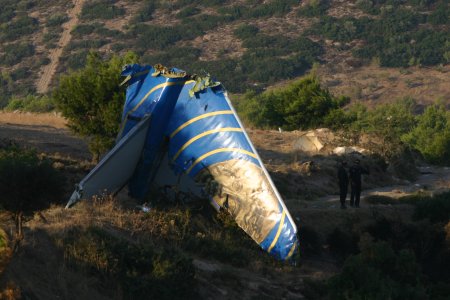Flight International online news 12:30GMT: Boeing has acted to reduce the likelihood of flightcrew misinterpreting a cabin altitude warning, following a request by the investigator leading the probe into the Helios Airways Boeing 737-300 crash in Greece on 14 August.
Although the investigation has a long way to run, evidence gathered so far suggests the basic cause was the aircraft’s failure to pressurise, resulting in the flightcrew losing consciousness.
The Greek Air Accident Investigation and Aviation Safety Board (AAIASB) has known for weeks that the cabin altitude (CA) warning horn sounded when the aircraft was passing through 14,000ft (4,270m) and that it was not cancelled for the rest of the flight from Larnaca, Cyprus to Greece.
But the investigators did not know why the crew did not cancel the strident warning sound.
Now it seems the AAIASB is concerned the pilots may have been confused by the fact that the automatic aural warning for an incorrect take-off configuration and the aural alert triggered when cabin altitude rises above 10,000ft make the same sound.
Boeing says its reminder to crews about the differences in the warnings “doesn’t mean [this] is necessarily the cause [of the Helios accident]”, and emphasises that “the investigation is still ongoing”.
But the fact Boeing issued its “multi-operator message” to 737 users at the AAIASB’s request is widely seen in the industry as a tacit acknowledgement that cabin pressurisation and the CA warning are the focus of the investigation.
Because the alert sound is identical for both the CA and take-off warnings, the Boeing message reminds crews that the take-off configuration warning horn can sound only when the aircraft’s weight is still on its wheels. If the same alert sounds in flight, it is the CA warning.
DAVID LEARMOUNT/LONDON
Source: Flight International























